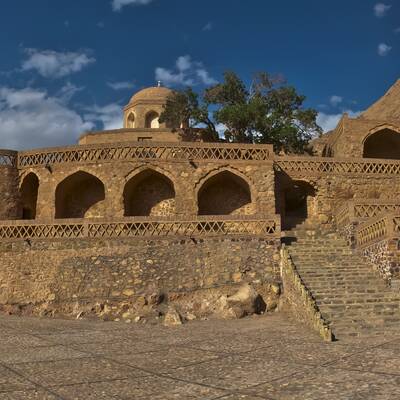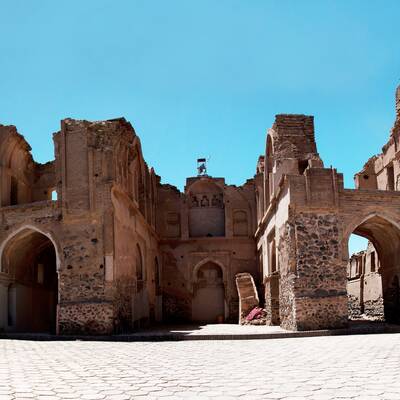
The Qaen Water Museum
The Qaen Water Museum is the first water museum in South Khorasan province and is located in the city of Qaen. The museum was opened during a government delegation's trip to Qaen in 2007. The museum is located in the old water reservoir building in the bazaar, which had previously undergone extensive restoration by the Cultural Heritage, Handicrafts and Tourism Organization. The bazaar's water reservoir is located at the beginning of the stone alley and is called the Bazaar Water Reservoir because it was located next to the old bazaar of Qaen. Archaeologists believe that this building dates back to the Timurid period.
The Qaen Water Museum consists of an entrance with a geometric arch and twenty-seven stairs that lead visitors to the water fountain. Various materials were used to construct this building; the water reservoir stairs are made of brick, which were placed on top of each other with a shaft and Sarooj mortar. The water reservoir has a cylindrical shape with a depth and diameter of seven meters and can hold up to three hundred cubic meters of water. The reservoir's cylinder is covered with Sarooj mortar up to the working level and is covered with a staircase-like structure made of bricks and plaster mortar. A water catchment is located on the west side and a drain is located on the east side to complete the other parts of this water reservoir. Additionally, the responsibility of ventilating and cooling the interior space of the water reservoir was taken by four windows on the four sides of the structure.
The purpose of establishing the first water museum in South Khorasan is to display the remaining water channels from different periods with a collection of images related to their water infrastructure, including dams, water reservoirs, aqueducts, and relevant documents such as endowments. Tools and equipment related to digging water channels, old tools used for water storage, lighting tools for water channels, water distribution objects, images of ancient centuries, milestones, and all water structures in the Qaenats area are part of the museum's exhibits. Another interesting part of this museum is the collection of documents and images that represent the customs, traditions, and beliefs of the people of the region related to water. For example, visitors here become familiar with the rain-seeking ceremony, proverbs, information about the architecture of water structures, and the wonders of ancient Qaenats.

